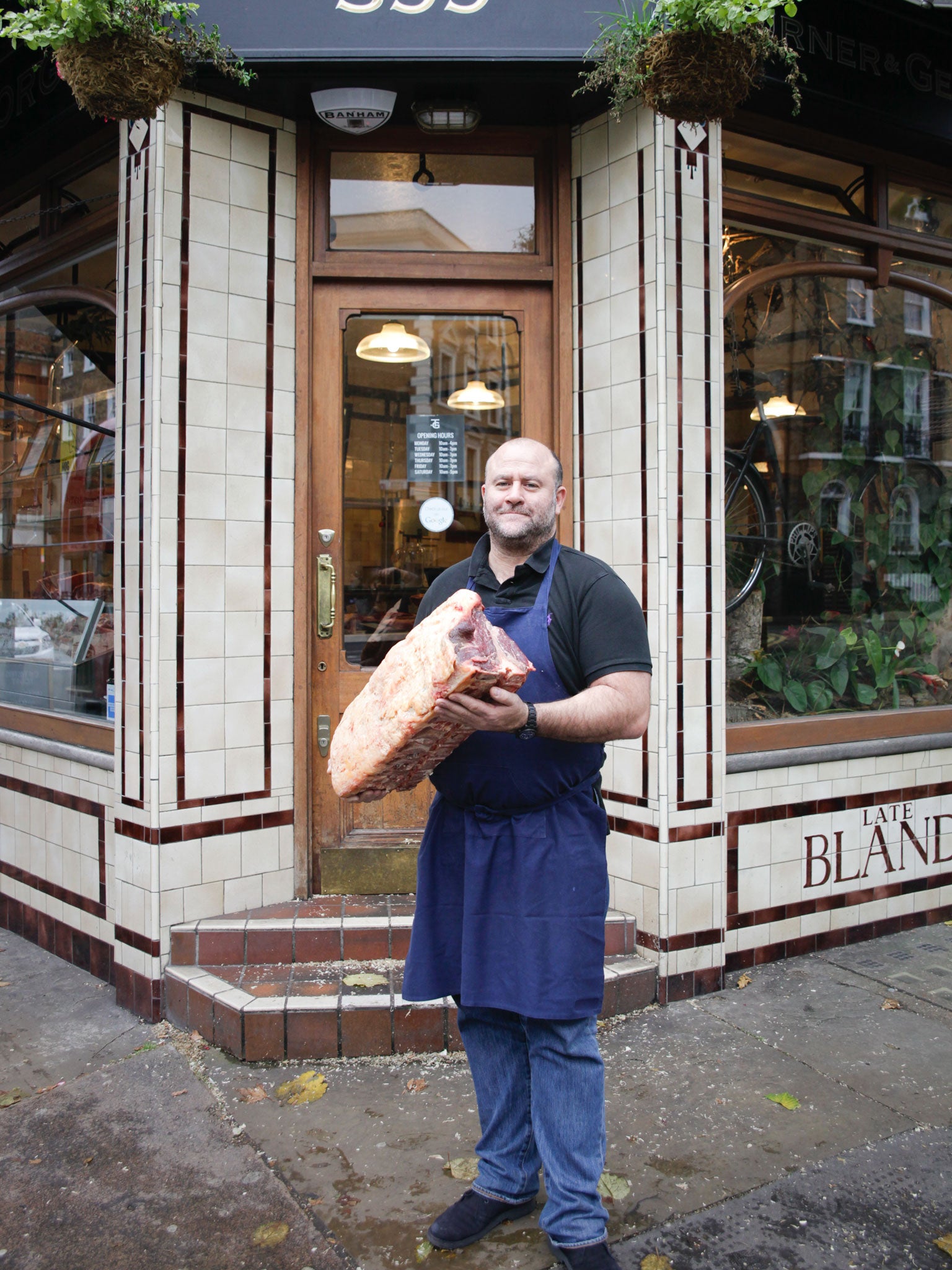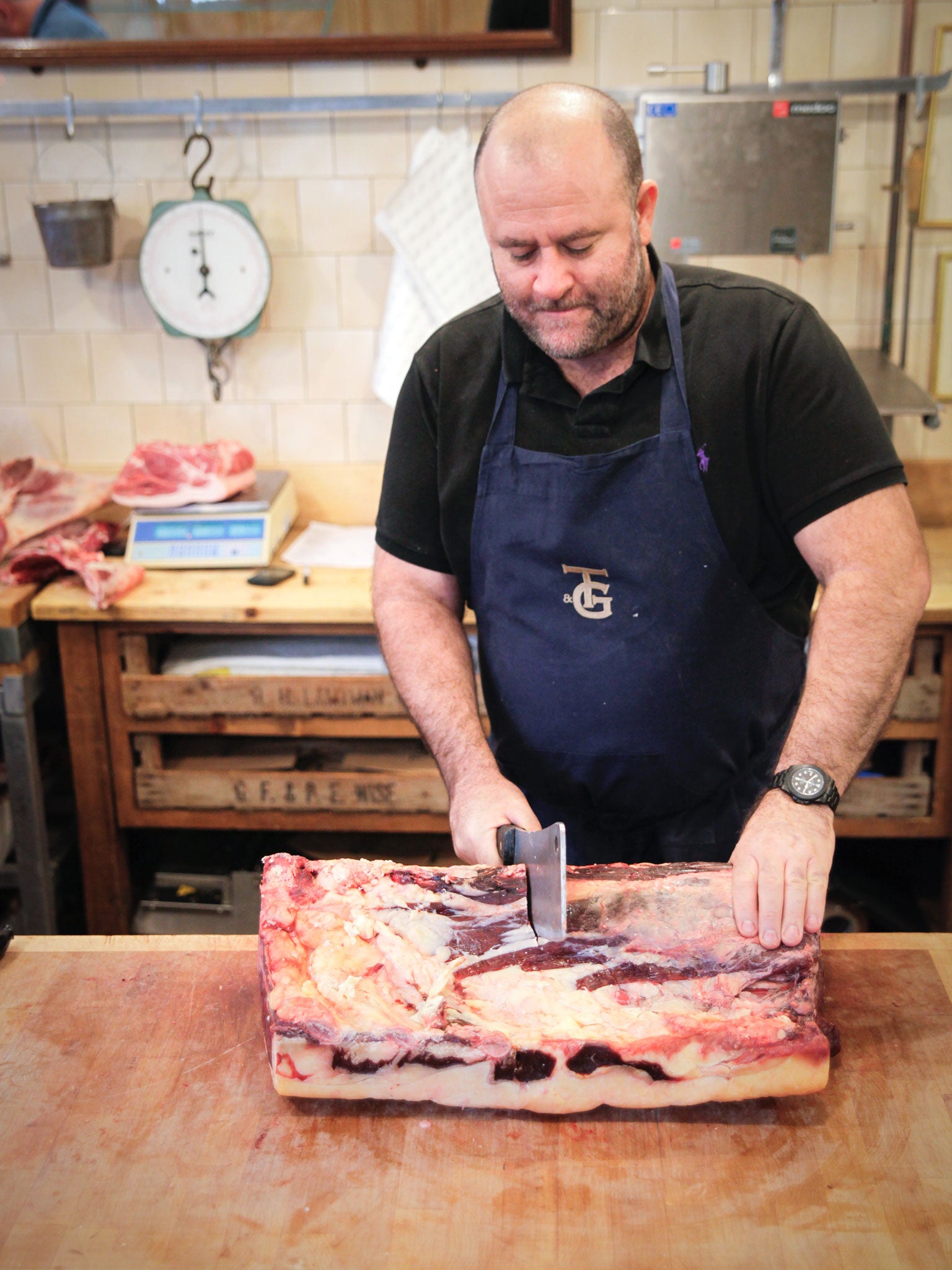Christmas 2015: Master butcher Richard Turner on how to land the choicest cut
Where’s it from? How was it reared? What was it fed? These are the questions you should ask about your Yuletide roast

A successful Christmas Day meal begins with a good butcher. If you've yet to find one and order your meat, do it right now. A good butcher is one who can tell you where your meat came from, what breed it is, some details on how it was fed and how it was reared, and ultimately how it was slaughtered as well. If they can't give you any of this information, steer clear.
Christmas Day cooking doesn't need to be stressful. Do the preparation the day before and you should be able to pull the whole thing off in two to three hours. It really can be simple; confidence is the trick.
Don't overthink things or try to pull off something excessively extravagant. Some years ago I made a seven-bird roast. I was trying to impress people and it worked well enough, but in retrospect it was a horrific thing to do to perfectly good poultry. It's lack of confidence that makes you do things like that.
Now I do the same thing every year: a rib of beef, a whole goose and a ham. It's a bit gluttonous, but when better than at Christmas?
My advice is to cook your Christmas meat low and slow; I put mine in the oven last thing at night at 120C, and nothing can go wrong. Check on it first thing in the morning, drain off the fat and continue in the oven until lunchtime.
Turkey
You get what you pay for. It should be a free-range "bronze" for sure. Most farms will get their turkeys in the middle of the year and feed them up very quickly, which is not what you should be looking for. Financial concerns dictate that most birds are reared as fast as possible, but flavour only comes through time. Any bird should be reared naturally, without hormones or growth promoters, over months rather than weeks. A really good turkey often comes in its own box, with details about the farm and the life it had.
I think people are finally moving away from turkey, though – it makes more sense to do something special with a chicken rather than have turkey for the sake of it. A lot of places sell chickens bred almost as big, but not as dry as turkey.

Duck
Duck is a good alternative. It's more traditional and a lot tastier than turkey but for some reason it's not as popular. The problem with duck is that most of the breeds we have are crosses and built for speedy growth, which I don't like. Try to get an elderly English duck – around six years old.
Goose
I love a goose – they're expensive but traditional and I always have one on my Christmas table. There's not a lot of meat on it, but you don't really need much, as it's very rich. I get mine from a flock which is dry-plucked and hung. I'll use a sweet stuffing with stollen bread, or fruit with sausage meat; put it inside the cavity, not the neck, and it will cook all the way through.
Beef
For me, a rib of beef is the king of roasting cuts. It has lots of fat on it, which keeps the meat moist. You don't want to go too big – if you're feeding a family of four, try a Wellington. In terms of value for money, shoulder or rump is often cheaper and can be beautiful slow-cooked. The mistake people make is putting their meat on at too high a temperature and for too long.
Ham
I like a crust on my ham – roast it slowly in a tray with mustard and breadcrumbs on the skin as an alternative to crackling. Pork is often overlooked, but in Spain, it's the traditional Christmas dish, eaten with dried fruit and quince.
Sides
I have to have pigs in blankets. Cook the bacon in a pan and use the same one to roast your Brussels sprouts until they are golden-brown. You can do this with root vegetables, too.
For my stuffing, I'll use broken-up sourdough, chunks of onion and a really good sausage meat. Stuffed inside a bird, the sourdough helps soak up and reduce some of the juices. Don't make your stuffing too refined; it's better rustic.
Cumberland sauce is a good alternative to the usual accompaniments; if you can make your own sauce, it's always worth it. Simmer your gravy from the meat juices and help it along with butter, which covers a multitude of sins.
One of the best things about Christmas is the leftovers, and it doesn't get much better than bubble and squeak. When I have goose, I also take the meat off the bones, make a stock and boil it down for gravy. With meat left over from the previous day and lots of stuffing, I pop it in a pot and cook it down to make potted goose. Often there's enough to last a few days.
Richard is a restaurateur and co-founder of London butchery Turner & George (turnerandgeorge.co.uk). His latest book, 'Hog: Proper Pork Recipes from the Snout to the Squeak', is published by Mitchell Beazley, priced £25
Join our commenting forum
Join thought-provoking conversations, follow other Independent readers and see their replies
Comments